Kingdom Animalia Order Coleoptera Subfamily Scolytinae Scientific name Hypothenemus hampei Rank Species | Phylum Arthropoda Family Curculionidae Genus Hypothenemus Higher classification Hypothenemus | |
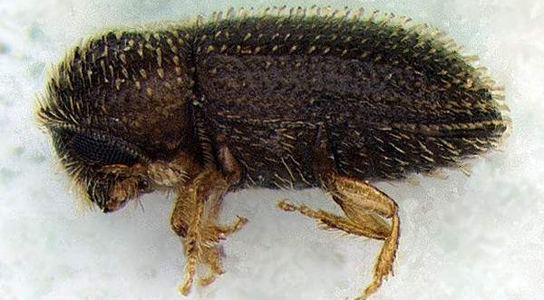 | ||
Similar Hypothenemus, Insect, Beetle, Beauveria bassiana, Beauveria | ||
The coffee borer beetle or coffee berry borer (Hypothenemus hampei) is a small beetle native to Africa. It is among the most harmful pests to coffee crops across the world where coffee is cultivated. Some Spanish common names of the insect include barrenador del café, gorgojo del café, and broca del café.
Contents
- Description
- Lifecycle
- Parthenogenesis
- Colonisation
- Distribution
- Control
- Prevention
- Natural resistance
- Chemical control
- Biological control
- Parasitoids
- Predators
- Diseases
- References
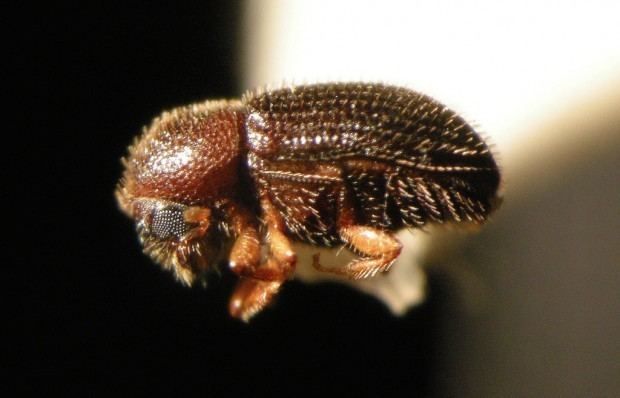
Description
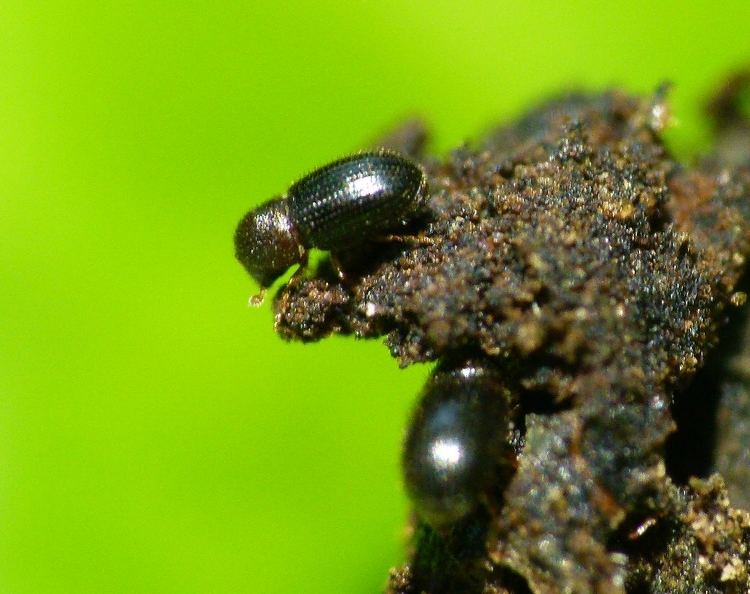
The larva is white, with a brown head and a length of 0.7–2.2 mm and a width of 0.2–0.6 mm. Females have two larval stages and males only one. They have strong mandibles, and their larval phase lasts 10 to 26 days. The pupae are yellowish, with a length of 0.5–1.9 mm.
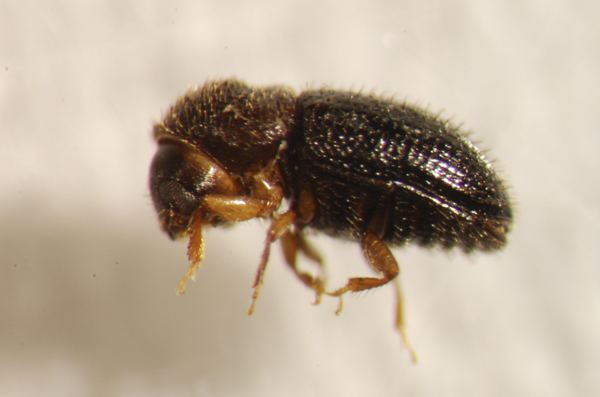
The adults are small black beetles. Females are 1.4–1.8 mm long. The males are 1.2–1.6 mm long. Female beetles can fly short distances; males have no wings. Females have four to six teeth in the frontal margin of the pronotum. H. hampei is confused sometimes with the false borer (H. obscurus or H. seriatus) and Xylosandrus (Scolytidae), but these species do not enter the coffee bean endosperm.
Lifecycle
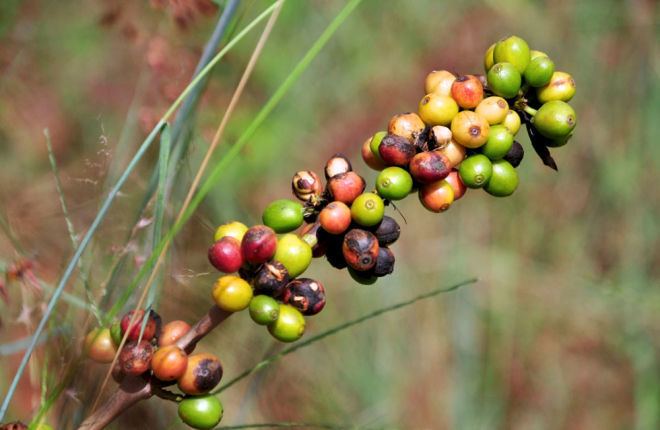
The maturation of the insect (from egg to adult) lasts between 24 and 45 days, varying according to the weather. Usually, the female drills the berry through the central disc, although it can enter through the side walls if the fruit is dry. Two days after the access, the beetle lays 35–50 eggs, which produce 13 females for each male. The lifespan for females is 35–190 days and for males 40 days. The new insects mate inside the seed. Some females lay the eggs in the same coffee plant, others colonise new ones. The males never leave the fruit.
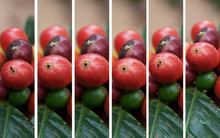
The same plant can host three to five generations of beetles. Up to 100 beetles can be found in a single fruit. The insect is very sensitive to desiccation, and waits for the rains to leave the fruit. The most affected areas in the crops are the shady and moist ones.
Parthenogenesis
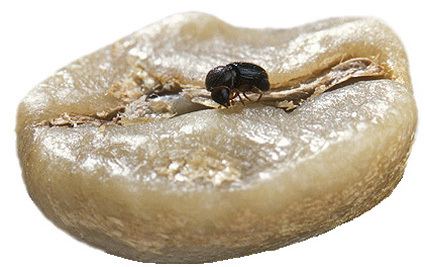
In some cases, the reproduction of the insect can be parthenogenetic, so the female beetle can lay fertile eggs without mating. This characteristic and the asymmetry in the proportion of females to males is thought to be induced by the cytoplasmic bacterium Wolbachia.
Colonisation
The main host of H. hampei is Coffea arabica, but other coffee species have been affected in some cases. The female beetles attack the fruits from 8 weeks past the flowering to 32 weeks. When the insect enters, it builds galleries in the endosperm where the eggs are deposited.
Distribution
The distribution of the pest corresponds to the entire area of coffee crops. The accidental transport of contaminated seeds is believed to be the cause. The insect was native to Angola, and spread to the rest of Africa during the 1920s. The first reports of it in the American continent were in Brazil (1926). In the 1970s, it affected Guatemala and Mexico. The beetle entered Colombia during the late 1980s. It entered the Dominican Republic in the 1990s. It was detected in Puerto Rico in August 2007. It was discovered in Kona (Big Island), Hawaii in September 2010.
Control
The presence of the insect affects the economy of over 20 million families that depend on the coffee harvest. It has caused marked reduction in the prices of coffee, reducing the sale price to growers. The beetle can destroy the entire harvest of an area. The main measures against the pest are preventive. The application of efficient control programs is difficult, since the coffee plant is perennial, with several flowering periods, and grows in areas with unpredictable weather.
Prevention
Prevention is based in the careful inspection of the coffee beans before leaving the coffee farms to avoid spreading of the insects. Also, a number of border controls has been established in countries with coffee crops.
Natural resistance
Some Coffea species are naturally resistant to the coffee borer beetle. C. kapakata seems to be the most resistant.
Chemical control
Insecticides are useful only before the female beetle penetrates the berry. Resistance to endosulfan has been reported in New Caledonia.
Biological control
During the time when beetle offspring emerge from each commercially ruined berry to disperse, they are vulnerable to predation. The yellow warbler, rufous-capped warbler, and other insectivorous birds have been shown to reduce by 50% the number of coffee borer beetles in Costa Rican coffee plantations.
Parasitoids
The parasitoids used to control the borer beetle are Hymenoptera (wasps) native to Africa. Although they have a low impact in the beetle population, the use of biologic control allows the product to qualify as organic food.
Predators
Ants (Hymenoptera: Formicidae) are the main predators of H. hampei. However, the research of Centro Nacional de Investigaciones de Café (Cenicafé, Colombia) reported other insect families implicated in the predation: Anthocoridae (Hemiptera) and Cucujidae (Coleoptera). These are the genus and species that have been reported to attack the borer beetle:
Diseases
Metaparasitylenchus hypothenemi (Nematoda: Allantonematidae) has been reported in Mexico. A Panagrolaimus sp. has been reported in the field in India. In laboratory experiments, Heterorhabditis sp. and Steinernema feltiae have been shown to infect the insect.
Beauveria bassiana produces high mortality in the beetle. Other fungi that attack the insect are: Hirsutella eleutheratorum, Paecilomyces sp. (the insect pathogenic species in the genus Paecilomyces have been renamed as Isaria), and Metarhizium anisopliae.
